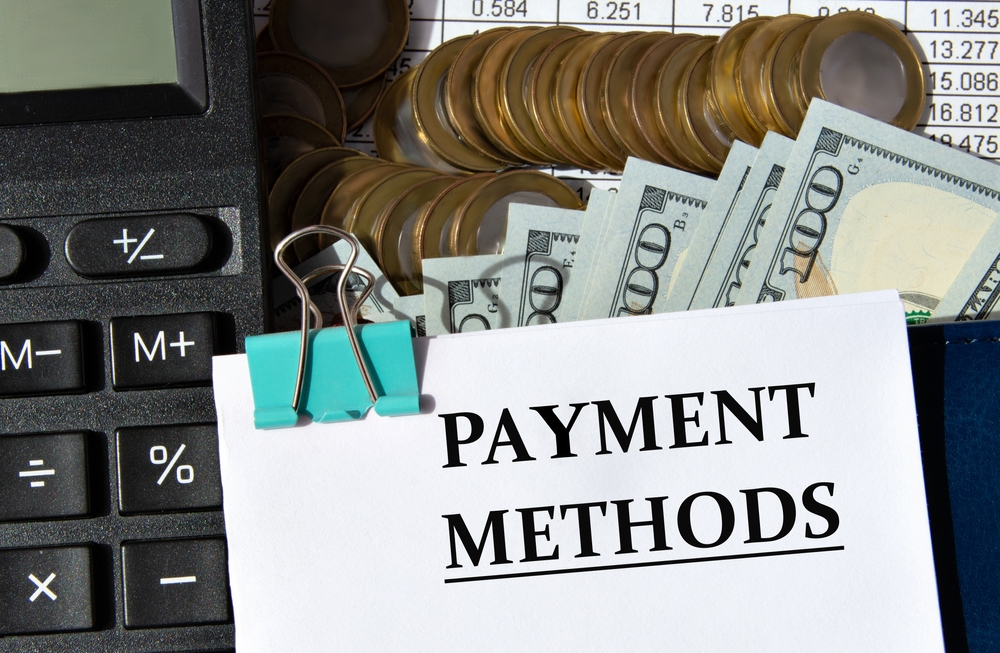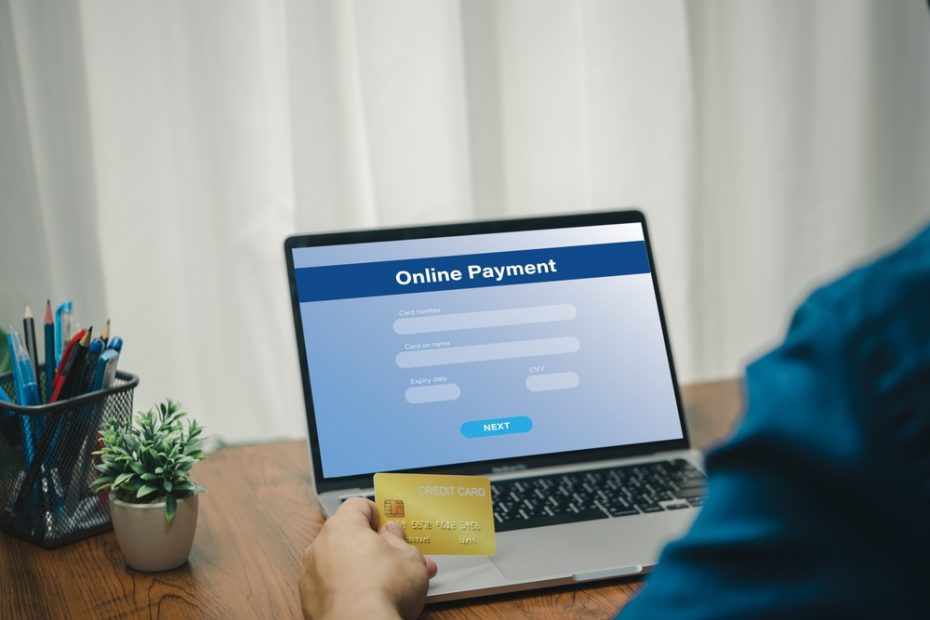Introduction to Online Payment Methods
The landscape of online payment methods is as dynamic as it is intricate, with numerous options available for both consumers and businesses. This comprehensive review seeks to delve into the mechanics, adoption rates, and innovation within the realm of digital transactions. From the earliest iterations of electronic fund transfers to the latest in blockchain-backed digital currency, we will explore how these methods have evolved to meet the demands of a digital economy.
Traditional Online Payment Systems: These include bank transfers, credit/debit card transactions, and online banking services.
Modern Innovations: We look at payment gateways, digital wallets, and peer-to-peer payment apps that have transformed convenience and security for users.
Emerging Technologies: An exploration into how new technologies like cryptocurrency and mobile commerce are redefining the meaning of currency and payment.
The review dissects each method’s infrastructure, user interface, processing times, and fee structures to provide a detailed understanding of the operational nuances of online payment mechanisms. Citing industry reports such as Statista, we reveal current trends and statistics that shed light on user preferences and market penetration of these various methods.
The Significance of Comprehending Different Payment Methods Online
Understanding the myriad online payment methods is crucial for several reasons:
Consumer Confidence: Users equipped with knowledge about payment options are more likely to trust and engage with online transactions.
Business Strategy: Companies that comprehend the spectrum of available payment methods can tailor their checkout process to optimize for conversion, align with customer preferences, and cater to global audiences.
Fraud Prevention: Awareness of the different types of online payment methods helps in recognizing potential vulnerabilities and implementing stronger security measures.
We take insights from authoritative sources like the Payment Card Industry Data Security Standard (PCI DSS) to emphasize the importance of security in payment method selection and the understanding thereof.
Effect of Online Payment Methods on Everyday Financial Management
The sheer diversity of online payment methods has profound implications on the day-to-day financial management of individuals and businesses alike:
Budgeting and Spending: Instantaneous transactions and digital tracking tools have facilitated real-time budgeting and spending oversight, fundamentally altering how users manage their finances.
Financial Inclusion: Digital payments have opened doors for unbanked populations by providing access to financial services without the need for traditional banking infrastructures.
Investment and Savings: The ease of online payments has streamlined saving strategies and investment opportunities, as users can transfer funds seamlessly across accounts and investment platforms.
Experts from the Financial Inclusion Global Initiative highlight the role of online payment methods in promoting financial inclusion globally.
In summary, this section serves as a primer, providing a robust foundation on which the subsequent sections will build.

Overview of Various Methods of Online Payment
Credit and debit cards remain the cornerstone of online payment systems due to their widespread acceptance and user familiarity. This section delves into the reasons for their sustained popularity and how they’ve adapted to the demands of the digital marketplace.
Ubiquity in E-commerce: Retailers around the globe accept credit and debit cards, making them a default payment option for consumers. This universal acceptance is largely due to the infrastructure established by major card networks such as Visa, MasterCard, American Express, and Discover.
Ease of Use: Making a purchase with a credit or debit card online is straightforward. Customers typically enter their card number, expiration date, and CVV code. This simplicity contributes to the cards’ dominance in the online payment space.
Security Measures: Credit and debit card transactions online are backed by robust security protocols. The implementation of CVV codes, two-factor authentication, and tokenization ensures transactions are both secure and compliant with industry standards like the Payment Card Industry Data Security Standard (PCI DSS).
Consumer Protection: These cards come with consumer protection mechanisms, such as the ability to dispute fraudulent charges and secure refunds for transactions that do not meet buyer satisfaction.
Loyalty and Rewards Programs: Many credit cards offer rewards, cashback, or points for purchases, which incentivize consumers to use their cards more frequently when shopping online.
Credit Building: Credit cards, when used responsibly, can help consumers build and maintain their credit scores, which is an important aspect of financial health.
Integration with Online Services: Credit and debit card information can be stored within digital wallets or online merchant accounts for faster checkout processes. Many online services and subscriptions also rely on card details for recurring payments.
Despite their benefits, merchants must navigate fees associated with accepting credit/debit card payments, including transaction fees, which can affect their pricing and margins. Moreover, chargebacks can be a costly issue for businesses, requiring both preventive measures and efficient management.
For consumers, maintaining the security of their card information is crucial. Regular monitoring of statements and using secure networks when entering card details can mitigate the risk of data breaches and fraud.

Emergence of Digital Currencies (Cryptocurrency) in eCommerce Payments
The integration of digital currencies into e-commerce has introduced a new paradigm in online transactions. This part of the article will explore the factors that have contributed to the rise of cryptocurrencies as a legitimate payment method in the digital economy.
Decentralization: Cryptocurrencies operate on decentralized platforms, which means that transactions are not reliant on central financial institutions. This aspect appeals to users seeking autonomy in their financial dealings.
Lower Transaction Fees: Without the need for intermediaries, cryptocurrency transactions can be completed with relatively lower fees compared to traditional online payment methods. This is particularly advantageous for cross-border transactions.
Privacy and Anonymity: Cryptocurrencies offer a level of privacy as transactions do not necessarily require personal information to be completed. This privacy can be a double-edged sword, attracting both privacy-conscious users and those with less savory intentions.
Fraud Reduction: Transactions made with cryptocurrencies are irreversible, which significantly reduces the risk of chargebacks and fraud for merchants.
Market Expansion: Accepting cryptocurrencies can open businesses to a global market of tech-savvy consumers who prefer or exclusively use digital currencies.
However, volatility in the value of cryptocurrencies remains a significant challenge, as does the evolving legal landscape governing their use. Additionally, the environmental impact of mining digital currencies is a growing concern.
Factors to Consider When Choosing the Right Online Payment Methods
When it comes to selecting the ideal online payment methods for your business or personal use, the sheer number of available options can be overwhelming. Understanding this challenge requires careful deliberation and strategic thinking. Below, we explore the intricacies of choosing the right payment solutions that align with specific needs, ultimately leading to a more seamless and efficient financial experience.
Navigating the Abundance of eCommerce Payment Choices
1. Analyzing Transaction Fees
One of the primary considerations when assessing different payment methods is the transaction fee structure. Each platform typically charges a percentage of the transaction amount, which can significantly impact the cost of business over time. Researching and comparing the fee structures of various payment gateways is crucial for minimizing expenses.
– Example: PayPal typically charges 2.9% + $0.30 per transaction within the US.
2. Examining the User Experience
The user interface and overall customer experience can make or break a consumer’s willingness to complete a purchase. Payment methods that provide a straightforward and secure process tend to have higher conversion rates. Consider how each system facilitates a quick and hassle-free checkout.
3. Understanding Integration Capabilities
The ability to integrate a payment method with existing systems (such as eCommerce platforms, accounting software, or CRM systems) is vital for operational efficiency. Look into the compatibility and integration support for each payment option.
4. Accessibility and Reach
Evaluate the geographic reach and currency support of the payment method, especially if your business operates internationally or is looking to expand. Accessibility can influence customer satisfaction and broaden your market.
5. Customer Preferences and Behaviors
Staying attuned to your target demographic’s preferred payment methods can inform your selection. Factors such as age, tech-savviness, and regional preferences can greatly influence the popularity of certain payment options among your users.
Personal and Organizational Considerations in Online Payments
1. Security Measures and Compliance Standards
Safety is paramount in online financial transactions. Investigate the security protocols each payment provider offers, including encryption standards, PCI DSS compliance, and fraud prevention measures.
Example: Stripe, a leading payment processor, highlights their use of machine learning to detect and prevent fraud.
2. Assessing Financial Stability and Risk
Consider how different payment methods may affect the financial health of your organization. This includes analyzing potential risks, such as chargeback rates and the reliability of the payment service provider.
3. Analyzing Payment Processing Speed
The time it takes for funds to become available can impact cash flow for businesses. Look into the processing times for various payment methods to understand potential delays in revenue recognition.
4. Considering Scalability
As your business grows, so will your payment processing needs. Choose a payment method that can scale with your business, accommodating increased transaction volumes without compromising performance.
5. Evaluating Vendor Support and Service Quality
The level of support and service offered by a payment provider is crucial, especially in the event of technical issues or disputed transactions. Review the support channels and service reputation of providers through customer testimonials and third-party reviews.
6. Long-term Cost Implications
While certain payment methods may seem cost-effective initially, long-term contractual obligations and hidden fees can alter their appeal. Delve into the total cost of ownership for each payment solution you consider.
7. Technology Advancements and Future-proofing
The payment industry is continually evolving, with new technologies and trends emerging. Opt for payment methods that demonstrate a commitment to innovation and technology upgrades to future-proof your payment infrastructure.
Selecting the right online payment methods is not just about accommodating current needs but also about positioning oneself or one’s business for future success. It requires a comprehensive analysis of the market landscape, an understanding of consumer behavior, and a forward-looking approach to technology and financial management. By prioritizing these factors, one can make a more informed decision that aligns with both personal and organizational objectives.
Identifying the Best Online Payment Methods
Choosing the right online payment method is crucial for optimizing the user experience and achieving operational efficiency. Several factors can influence this choice, each tied closely to individual preferences and specific objectives:
Transaction Costs: Consideration of transaction fees that may impact the overall cost for users or affect a business’s profit margins is essential. High fees might deter customers, while low fees can encourage transactions.
Security Measures: Ensuring that payment methods have robust security protocols such as encryption and fraud prevention tools protects users’ sensitive financial data.
Payment Processing Time: The speed with which transactions are processed can be a determining factor for users who need immediate access to services or for businesses managing cash flow.
User Convenience: Payment methods that offer ease of use, such as one-click purchasing or auto-fill forms, can enhance the user experience and increase the likelihood of repeat transactions.
Compatibility and Integration: The ease of integrating payment methods with existing eCommerce platforms and their compatibility with other tools and applications influences their suitability for businesses.
Customer Preference: Understanding demographic trends and customer preferences can help in selecting methods that are more likely to be embraced by the target audience.
Consumer vs. Business-centric eCommerce Payment Solutions
Consumer-Centric Payment Methods:
Consumers prioritize speed, simplicity, and safety. They often favor payment solutions that integrate seamlessly with their lifestyle, such as:
Digital Wallets: Apps like PayPal, Apple Pay, and Google Wallet offer a secure and quick way to pay online without entering card details for every transaction.
Mobile Payments: With the ubiquity of smartphones, options like Samsung Pay appeal to users who appreciate paying through a device they always carry.
One-Click Payments: This feature, made popular by platforms like Amazon, saves users’ payment information for future use, making the checkout process faster and more straightforward.
These consumer-centric methods cater to the need for convenient, quick, and secure transactions, reflecting the payment preferences of individual shoppers who engage in eCommerce activities.
Business-Centric Payment Methods:
Businesses, on the other hand, have a broader set of concerns when it comes to selecting online payment methods:
Merchant Accounts: Providing the ability to accept various forms of payments such as credit and debit cards, these accounts are vital for businesses that wish to cater to a wide audience.
Payment Processors: Services that handle the transaction process from start to finish, such as Stripe or Square, are crucial for businesses looking for a streamlined payment ecosystem.
Recurring Billing Systems: For businesses that operate on a subscription model or require regular payments, systems that automate these processes are invaluable.
International Payment Options: For global businesses, the ability to accept payments in multiple currencies and conform to different countries’ regulations is a priority.
Business-centric payments are engineered to provide versatility, scalability, and compliance with financial regulations, addressing the multifaceted needs of businesses operating in the digital marketplace.
Understanding the distinct requirements and preferences of consumers and businesses is fundamental when identifying the most suitable online payment methods. Each group approaches transactions with different expectations and needs, which must be met to ensure satisfaction and maintain a competitive edge in the eCommerce space.

Best Online Payment Methods for Businesses
Understanding Your Target Audience’s Payment Preferences
Businesses aiming to succeed in the digital marketplace must comprehend the payment preferences of their target audience. By analyzing purchasing habits and payment method usage patterns, companies can not only align their transactional processes with customer expectations but also foster trust and convenience, leading to increased customer satisfaction.
Market Research: Conduct surveys, focus groups, and utilize analytics tools to gather data on the payment methods your customers frequently use and prefer.
Customer Segmentation: Determine if certain demographics favor different payment options. For example, younger audiences may gravitate towards mobile payments or digital wallets, while older customers might still value the use of credit cards.
Competitor Analysis: Research what payment methods competitors are offering and how well these options are received by their customers.
Feedback Channels: Implement a system for collecting ongoing customer feedback on payment options to stay updated on changing preferences.
Understanding these aspects ensures that the business provides relevant and convenient payment solutions, which can enhance the user experience and potentially increase conversion rates.
Essential Considerations for Selecting Online Payment Methods
Selecting the most effective online payment method for your business involves a comprehensive analysis of several key factors:
Transaction Fees: Consider the costs associated with different payment methods and how they impact your profit margins. A balance between affordable fees and quality service is crucial.
Integration Capabilities: Ensure that the payment methods can seamlessly integrate into your current eCommerce platform to provide a smooth checkout experience.
Global Reach: If your business caters to an international audience, prioritize payment methods that are widely accepted across different countries and currencies.
Security Features: Opt for payment solutions that offer robust security measures to protect both your business and your customers from fraud and data breaches.
Settlement Times: Look into how quickly funds from transactions become available, as this can affect your cash flow management.
Customer Support: Choose providers that offer reliable customer support to resolve any issues promptly.
Considering these factors helps in making an informed decision that aligns with your business objectives and operational requirements.
The Integral Role of Payment Processors and Merchant Accounts
Payment processors and merchant accounts are foundational components of a business’s eCommerce payment system, playing a pivotal role in facilitating online transactions.
Simplifying Transactions: Payment processors handle the technical side of transactions, from authorization to settlement, thus simplifying the payment experience for both the business and the consumer.
Fraud Prevention: They provide advanced fraud detection and prevention tools to reduce the risk of unauthorized transactions.
Merchant Accounts: Having a dedicated merchant account enables businesses to accept credit and debit card payments, which are among the most preferred payment methods for online shoppers.
Compliance: Payment processors ensure that transactions comply with industry standards such as PCI DSS, contributing to the overall security and trustworthiness of the business.
Scalability: As businesses grow, payment processors can easily scale to handle an increased volume of transactions without compromising on performance or security.
In conclusion, selecting the right payment processors and setting up a proper merchant account is critical for businesses to handle online payments effectively. It is essential to partner with a payment processor that offers a seamless blend of security, compliance, and user-centric features to support your business’s long-term growth and adapt to the evolving online payment landscape.
Best Online Payment Methods for Consumers
Consumers today demand flexibility and convenience as they navigate through various online shopping platforms. The digital marketplace has responded by offering an array of payment options to cater to the diversity of consumer preferences and financial habits. An in-depth analysis reveals several underlying reasons behind this increased flexibility:
Personalized Shopping Experience: Tailoring payment options to match consumer habits creates a more personal connection with shoppers, leading to higher satisfaction rates.
Global Commerce: With cross-border transactions becoming commonplace, platforms provide payment methods that transcend geographical boundaries, facilitating international purchases.
Technological Advancements: Innovations in fintech have led to the development of secure, user-friendly options that complement traditional payment methods like credit cards.
Industry data from sources such as Statista illustrates escalating figures in digital buyers, highlighting the necessity for online retailers to adapt to this varied payment landscape.
The Ascendancy of Digital Wallets in eCommerce
Digital wallets, known for their swift, seamless transactions, have gained substantial ground as preferred methods of payment online. Their unique attributes have fueled their widespread adoption:
Streamlined Checkout: Digital wallets store payment and shipping information, enabling one-click purchases and reducing the friction experienced during checkout.
Enhanced Security Measures: Advanced encryption and tokenization ensure user data is protected, thus instilling trust among consumers.
Rewards and Incentives: Many digital wallet providers offer rewards, cashback, or discounts, which encourage continued use and loyalty.
Moreover, industry giants such as PayPal and Apple Pay have set benchmarks in user adoption, as detailed in Javelin Strategy & Research’s reports. The introduction of contactless payment methods via smartphones and wearable technology has only accelerated this trend further.
To provide a more exhaustive understanding, let’s dive deeper into what makes digital wallets a frontrunner in eCommerce payment systems:
Consumer-Centric Design
Digital wallets are designed with a clear focus on user experience. They feature intuitive interfaces and simple navigation, which greatly appeal to tech-savvy consumers who prioritize speed and convenience in their transactions.
Integration with Mobile Devices
As mobile commerce grows, the synchronization of digital wallets with mobile devices presents a significant advantage. The ease of making payments through a device that is an integral part of daily life is a strong selling point for consumers.
Acceptance Across Merchants
A widening acceptance of digital wallets among merchants, both big and small, ensures that consumers can use their preferred payment method across a majority of online retail stores. This ubiquity is crucial in maintaining the momentum of digital wallet usage.
Fostering Financial Inclusion
Digital wallets also play an essential role in promoting financial inclusion by providing services to individuals who may not have access to traditional banking. This opens up the digital marketplace to an entirely new segment of consumers.
As we analyze the best online payment methods for consumers, it becomes clear that the enriched flexibility offered by multiple eCommerce payment options, coupled with the rising dominance of digital wallets, stands as a testament to the dynamic nature of consumer finance in the digital age. Retailers who prioritize these methods in their payment gateways are set to witness improved customer engagement and retention, aligning themselves with the evolving landscape of online commerce.

Final Thoughts
In conclusion, the ever-evolving sphere of online payment methods reflects the dynamic interplay between consumer preferences, technological advancements, and the strategic imperatives of businesses operating in the digital economy. From the ubiquitous use of credit and debit cards, the rising popularity of digital wallets, to the innovative adoption of cryptocurrencies, each method offers unique benefits and challenges that cater to a diverse range of needs.
As businesses strive to cater to a global customer base, the significance of offering a mosaic of secure, efficient, and user-friendly payment options becomes paramount. Ultimately, the meticulous integration of these payment methods into e-commerce strategies not only aligns with consumer habits but also serves as a crucial factor in sustaining growth, improving customer retention, and maintaining a competitive edge in the market.
Ready to secure your online transactions while embracing the convenience of modern commerce? Look no further than Bankful – your go-to solution for a seamless online payment experience. From the ease of traditional methods like credit/debit cards to the innovative frontiers of digital wallets and cryptocurrencies, Bankful delivers a multifaceted platform that caters to all your financial transactions. With Bankful, benefit from lower fees, enhanced security measures, and a range of options that ensure your business stays ahead of market trends and customer preferences.
FAQs
What is a payment method online?
A payment method online refers to the way a customer can pay for goods and services over the internet. It can include credit cards, debit cards, electronic wallets, bank transfers and more.
What are some ecommerce payment options?
Some ecommerce payment options include credit and debit cards, mobile payments, PayPal, bank transfers, and cryptocurrencies.
How do online payments work?
Online payments work by transferring funds electronically from the buyer’s account to the seller’s account, after the buyer authorizes the payment through a secure payment gateway.
What is an ecommerce payment system?
An e commerce payment system is a platform that allows for the exchange of funds when goods or services are purchased online.
What are the different payment methods online?
There are numerous payment methods online such as credit/debit cards, PayPal, net banking, mobile wallets, and electronic checks among others.
What are ecommerce payment systems?
Ecommerce payment systems are infrastructures that support the online financial transactions of goods and services.
What are the various methods of online payment?
The various methods of online payment include credit/debit cards, PayPal, Google Pay, bank transfers, mobile wallet apps, and even cryptocurrencies.
What are payment systems for eCommerce?
Payment systems for eCommerce are infrastructures and protocols established to safely and reliably process transactions when customers make purchases online.

